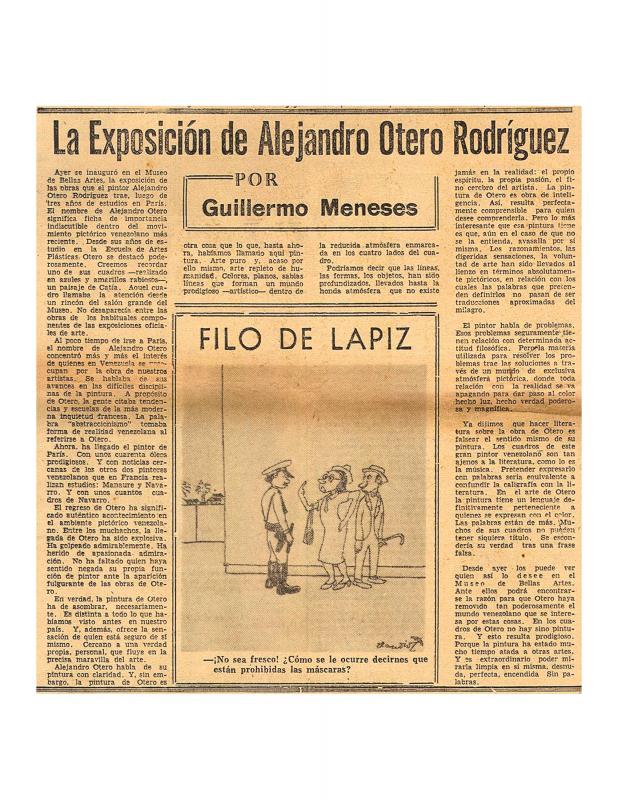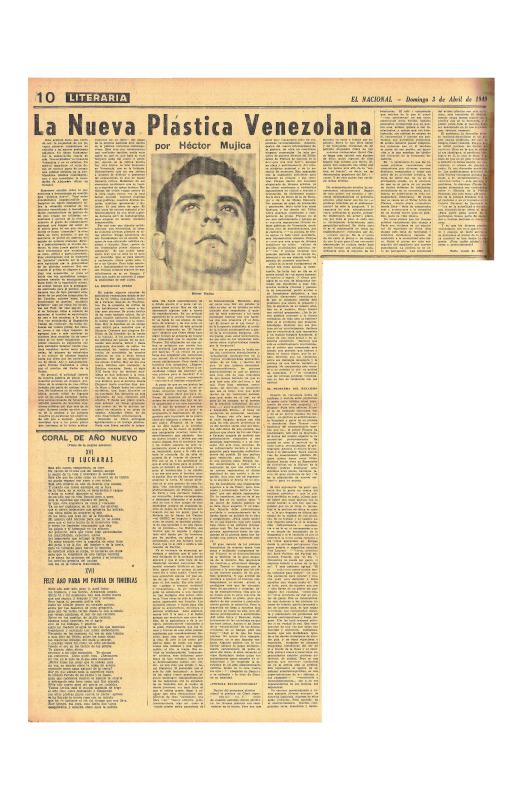In 1991, the Museo de Bellas Artes de Caracas in conjunction with the Museo de Arte Moderno Jesús Soto in Ciudad Bolívar organized the exhibition Alejandro Otero. Las estructuras de la realidad—a tribute to painter and sculptor Alejandro Otero (1921–90) who had died the year before. The catalogue featured a number of texts, including this one by Venezuelan researcher, critic, and curator Mariana Figarella (1959–96) on the Las cafeterias series, one of the foundational series of abstract works from Venezuela. Almost forty years after the series was first exhibited, Figarella revisits Otero’s early work, produced while he was in Paris in the late forties. She examines these works in terms of concerns crucial to the artist such as the way interrelated “structures of reality” give rise to different perceptions and objects, and to space itself. Indeed, the notion of “reality” as formulated here was one of the major concerns of Modern art insofar as it attempted to change and alter reality while also questioning its representation. According to Figarella, the Las Cafeteras series provides a vision of the structure of the world and of objects in order to go beyond that structure and into its progressive disintegration. The text also addresses the failure of the conservative Venezuelan art scene to embrace Otero’s project. Figarella considers this series an early manifestation of a coherent body of research that the artist would pursue consistently in the years to come.
For other critic texts on Otero’s work, see the text by J. R. Guillent Pérez, who—like Otero—was a member of Los Disidentes, entitled “Realidad e irrealidad: el postigo de Alejandro Otero” (ICAA digital archive doc. no. 1172158); Guillermo Meneses’s “La exposición de Alejandro Otero Rodríguez” (doc. no. 1097092); Roberto Guevara’s “La vertical vibrante de Maracay, 1968” (doc. no. 1168201); journalist Héctor Mujica’s “La nueva plástica venezolana” (doc. no. 850512); and Elizabeth Schon’s essay “Los coloritmos de Alejandro Otero” (doc. no. 1172142)].





